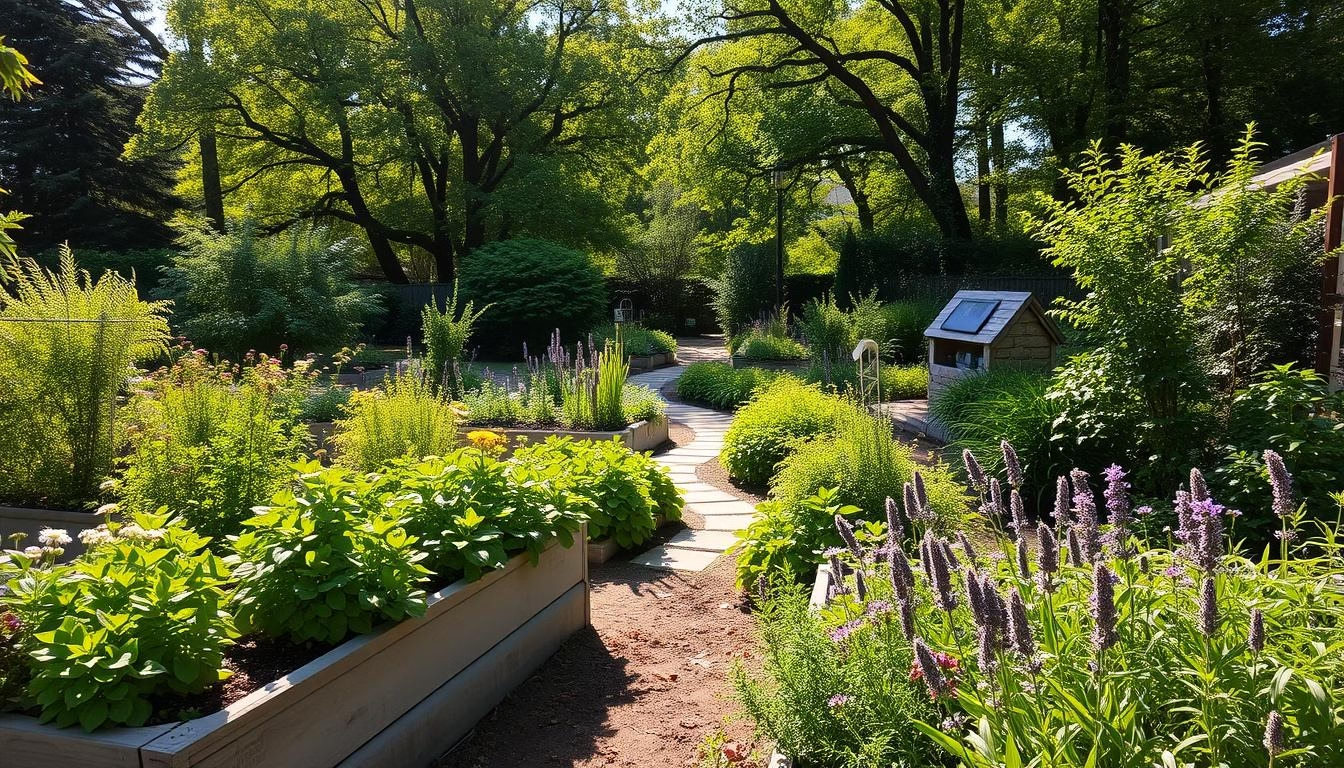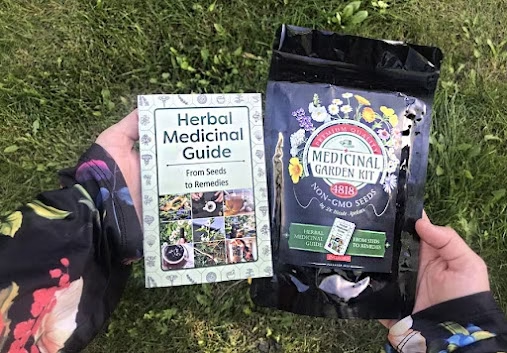Did you know your backyard could be a treasure trove of healing plants? Growing your own medicinal garden is a rewarding way to take charge of your health. For centuries, people have relied on herbs and plants to address common ailments, and modern research continues to support their benefits.
Herbs like turmeric, peppermint, and ginger are not only easy to grow but also packed with properties that can help with pain, nausea, and more. Imagine stepping outside to pick fresh ingredients for a soothing tea or a homemade salve. It’s a blend of self-care and sustainability.
However, it’s essential to approach this with care. Always consult your doctor before trying natural remedies, especially if you’re on medication. This guide will walk you through the basics of creating a medicinal garden, sharing practical tips and recipes backed by credible studies. Let’s explore how you can turn your garden into a source of healing.
Getting Started with Your Medicinal Garden
Starting a medicinal garden is easier than you might think. Begin by assessing your space. Most herbs need at least six hours of sunlight daily. Check the soil type and ensure it has good drainage. Water availability is also crucial, as overwatering can harm plants.

Choose plants based on common health needs. For example, peppermint is great for stomach issues and headaches. Ginger can help with nausea and muscle pain. Basil supports heart health, while chamomile soothes stress and promotes sleep.
Space your plants properly to avoid competition for nutrients. Raised beds or containers work well for small spaces. Organize your garden by grouping herbs with similar care needs. This makes maintenance easier and ensures healthier growth.
Incorporate organic compost to enrich the soil. Avoid chemical pesticides and opt for natural pest control methods like neem oil. This keeps your garden safe and eco-friendly.
Always consult a local expert or doctor before using herbs, especially if you’re on medication. Some plants can interact with prescriptions or worsen certain conditions. Safety is key when creating your personal healing space.
Related: Top 10 Medicinal Herbs to Grow in Your Backyard
Essential Ingredients for Homemade Natural Remedies
Transform your kitchen into a healing hub with these essential ingredients. Herbs and spices like turmeric, mint, and basil are not just for cooking—they’re powerful tools for health. These ingredients can help with everything from muscle pain to stress relief.
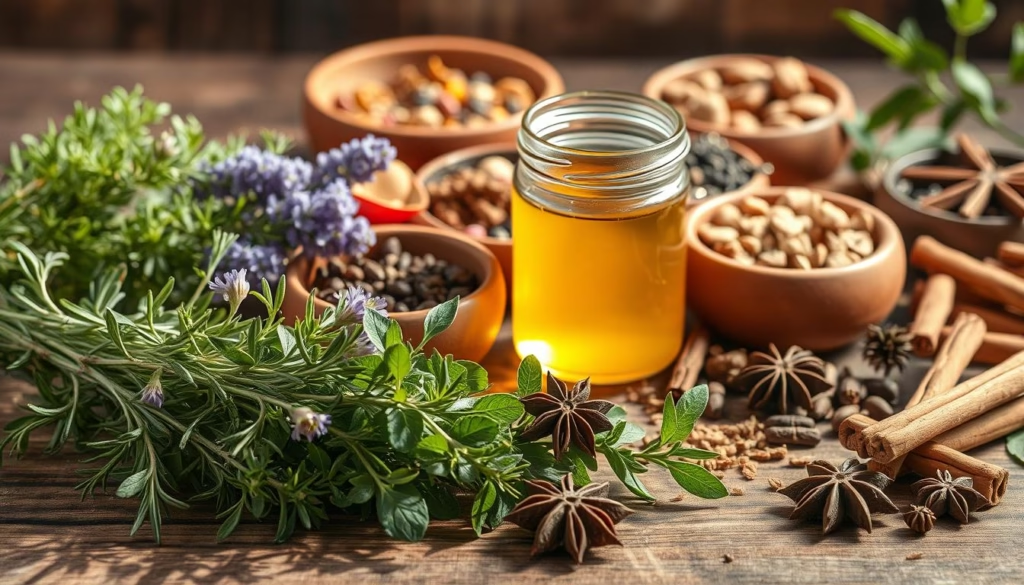
Turmeric is a standout for its anti-inflammatory properties. Studies show curcumin, its active compound, can reduce joint pain and swelling. Mint, especially peppermint, is great for soothing headaches and stomach issues. Basil supports heart health and can help manage stress.
To get the most out of these ingredients, proper harvesting and storage are key. Here’s how:
- Harvest herbs in the morning when their oils are most potent.
- Dry them in a cool, dark place to preserve their medicinal properties.
- Store dried herbs in airtight containers away from light and heat.
Combining ingredients can enhance their effects. For example, mixing honey with warm water creates a soothing drink for colds. Honey also has antibacterial properties, making it a great addition to many remedies.
Scientific research backs the use of these ingredients. Studies highlight turmeric’s role in reducing inflammation and peppermint’s ability to ease headaches. Always use pure water and organic honey for the best results.
With these tips, you can create effective home remedies that support your body’s health. Whether it’s a cup of herbal tea or a simple salve, these ingredients are versatile and easy to use.
=> The Plants Doctors Are Begging People To Grow (Video)
Recipes for Natural Remedies
Crafting your own healing solutions at home is simpler than you’d expect. With a few common ingredients, you can create teas, tinctures, and topical applications that support your body’s health. Here are some easy recipes to get you started.
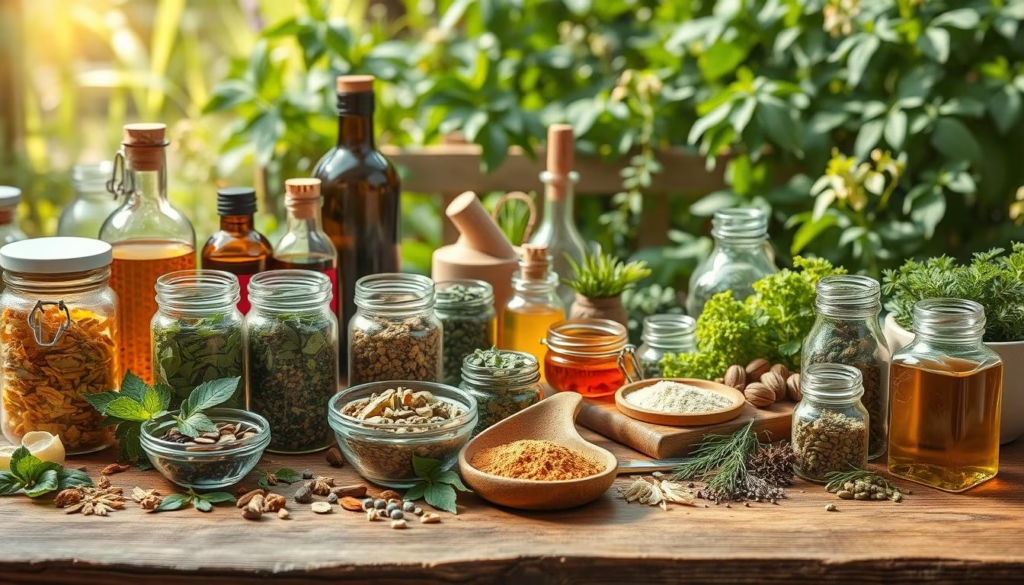
Ginger is known for its ability to ease nausea and headaches. To make ginger tea:
- Peel and slice a 1-inch piece of fresh ginger.
- Boil 2 cups of water and add the ginger slices.
- Simmer for 10 minutes, then strain into a cup.
- Add a squeeze of lemon for extra anti-inflammatory benefits.
This tea is perfect for soothing stomach issues or providing relief from muscle pain.
Natural Cough Syrup
For a simple cough remedy, try this honey-based syrup:
- Mix 1 tablespoon of honey with 1 teaspoon of fresh ginger juice.
- Add a few crushed basil leaves for added antibacterial properties.
- Take 1 teaspoon of the mixture as needed to soothe your throat.
Honey’s antibacterial effects make this syrup a great option for colds.
DIY Capsaicin Cream
For muscle and joint pain, capsaicin cream can provide relief. Here’s how to make it:
- Mix 3 tablespoons of cayenne powder with 1 cup of coconut oil.
- Heat the mixture gently until the oil is infused with the cayenne.
- Let it cool, then apply a small amount to the affected area.
Always test a small patch of skin first to ensure no irritation occurs.
Safety Tips
When making home remedies, keep these tips in mind:
- Use distilled warm water for recipes like nasal rinses.
- Consult your doctor before trying new remedies, especially if you’re on medication.
- Avoid overusing high-dose ingredients like cayenne, as they can affect your body’s balance.
These recipes are backed by studies and can be a great addition to your wellness routine. Enjoy the benefits of these simple, effective solutions!
Recommended: The Medicinal Garden Kit With free Herbal Medicinal Guide: From Seeds to Remedies
Tips for Safe and Effective Home Remedy Use
Using home remedies can be a powerful way to support your health, but safety is key. While many remedies are backed by studies, personal sensitivities vary. Always consult your doctor before trying new treatments, especially if you’re on medication.
Start with small doses to monitor for adverse reactions. For example, high doses of turmeric or cinnamon can cause digestive issues. Adjust recipes to suit your body’s needs and conditions.
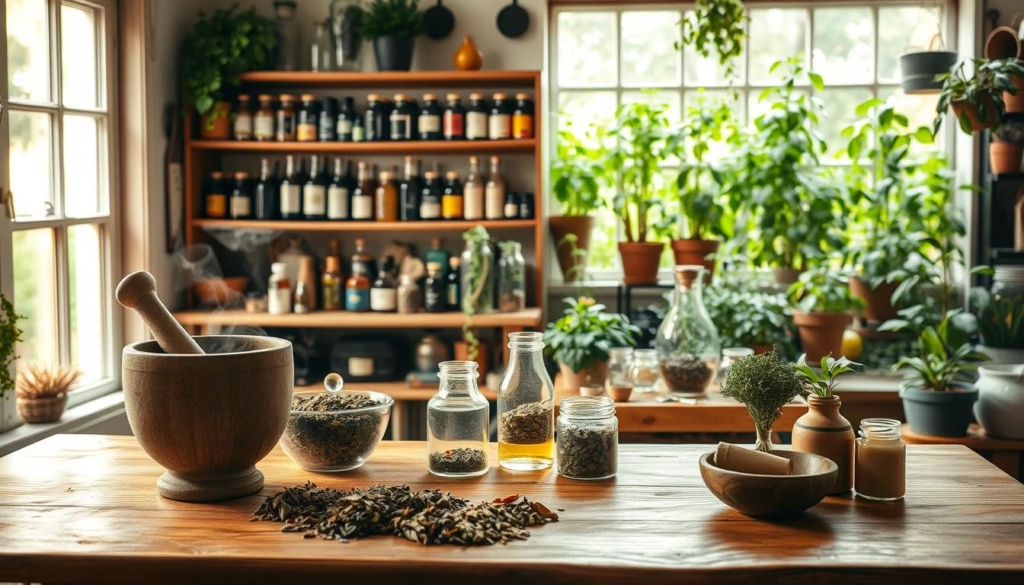
Use distilled or cooled boiled water when preparing remedies. This ensures cleanliness and effectiveness. Proper storage is also crucial. Keep herbal preparations in airtight containers away from light and heat.
Cross-reference remedy ingredients with your medications. Some herbs, like ginger, can interact with prescriptions. If you’re uncertain, seek professional advice.
Cleanliness is vital. Wash your hands and tools before making mixtures. This prevents contamination and maintains the remedy’s potency.
Here are additional tips for safe use:
- Test topical applications on a small skin area first to check for irritation.
- Avoid giving honey to children under one year due to the risk of food poisoning.
- Limit the use of strong ingredients like cayenne to prevent adverse effects.
Studies show that many remedies, like ginger for nausea or honey for coughs, can be effective. However, professional guidance ensures they work well for you. Combine natural treatments with expert advice for the best results.
Conclusion
Creating your own medicinal garden is a rewarding way to take control of your health. With ingredients like turmeric, ginger, and peppermint, you can craft effective mixtures to address symptoms like pain, cough, and stomach issues. Research supports the benefits of these plants, but each person’s condition is unique.
Start with the right ingredients and follow scientifically backed recipes. Always consult your doctor before trying new treatments, especially if you’re on medication. This ensures safety and effectiveness.
Experiment with recipes, but monitor for any adverse effects. Proper storage and dosage are key to maintaining the potency of your home medicine. Whether it’s a soothing tea or a topical oil, these remedies can also help with preventive care.
Take charge of your health naturally and responsibly. Share your experiences and successful recipes with others. Together, we can explore the healing power of plants while prioritizing safety.

